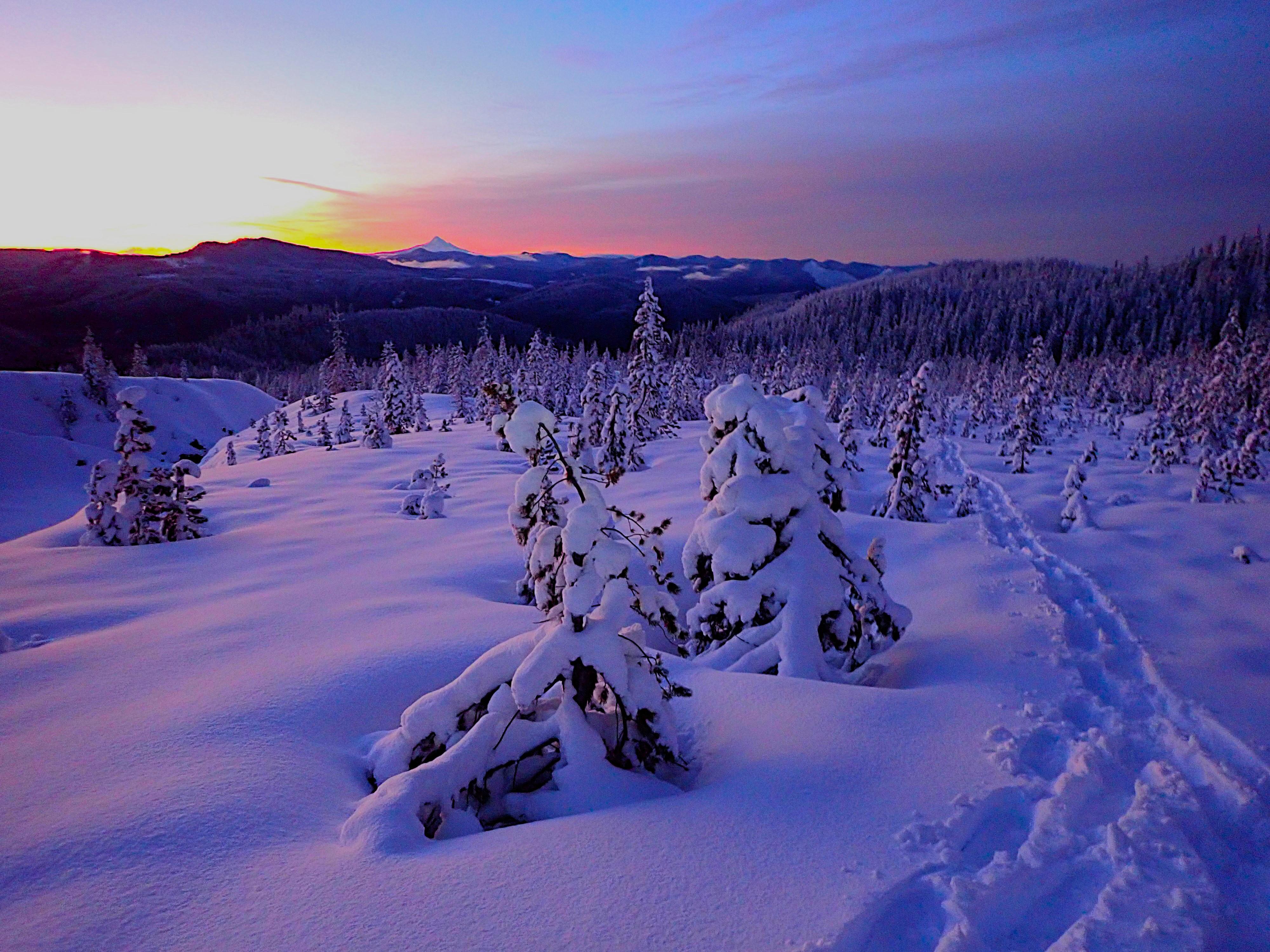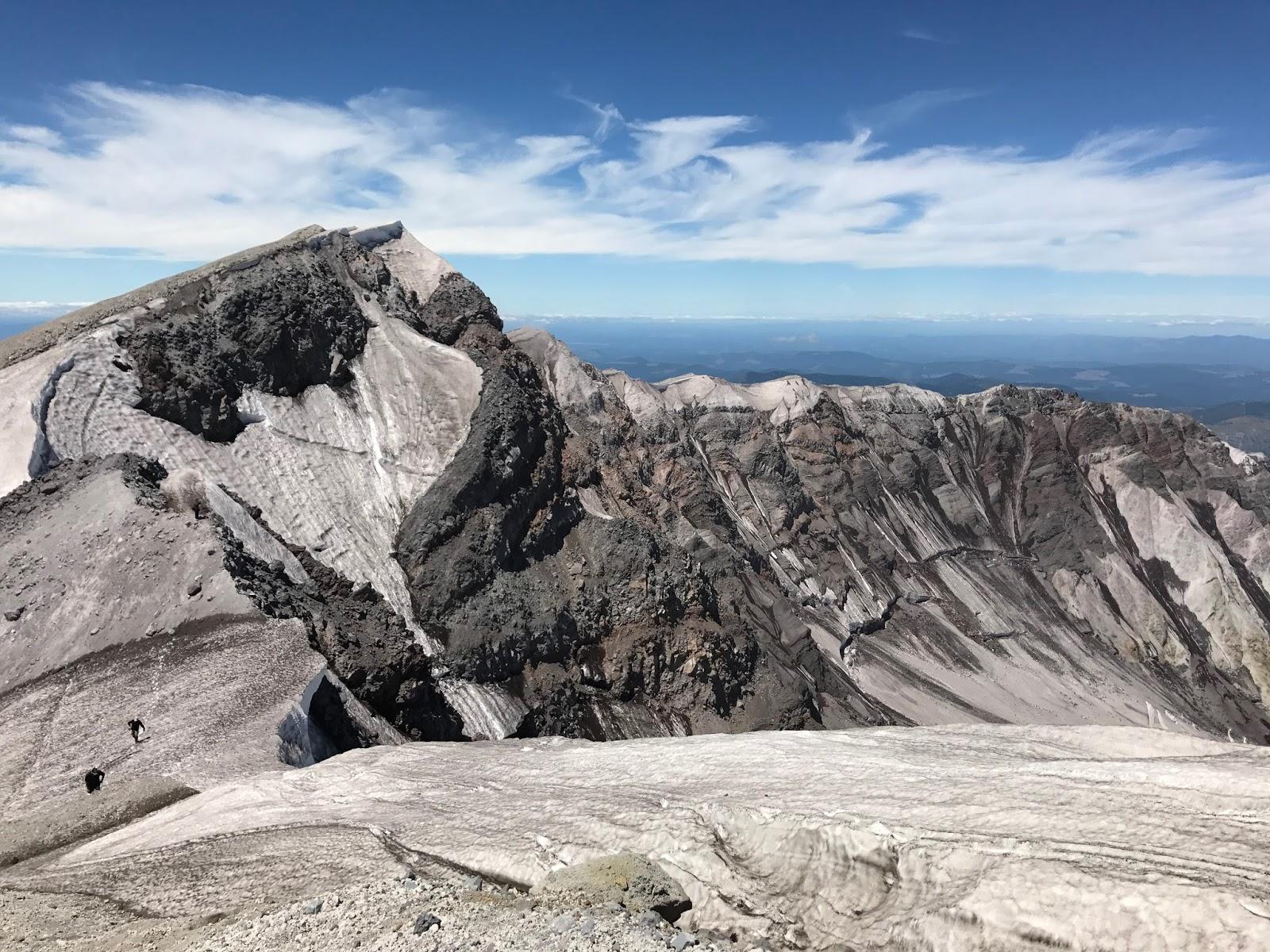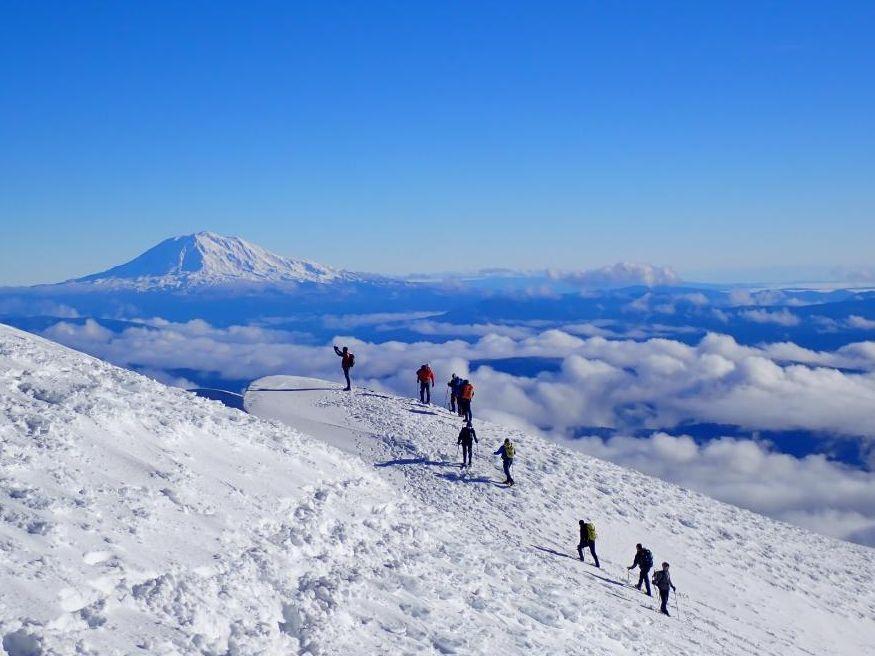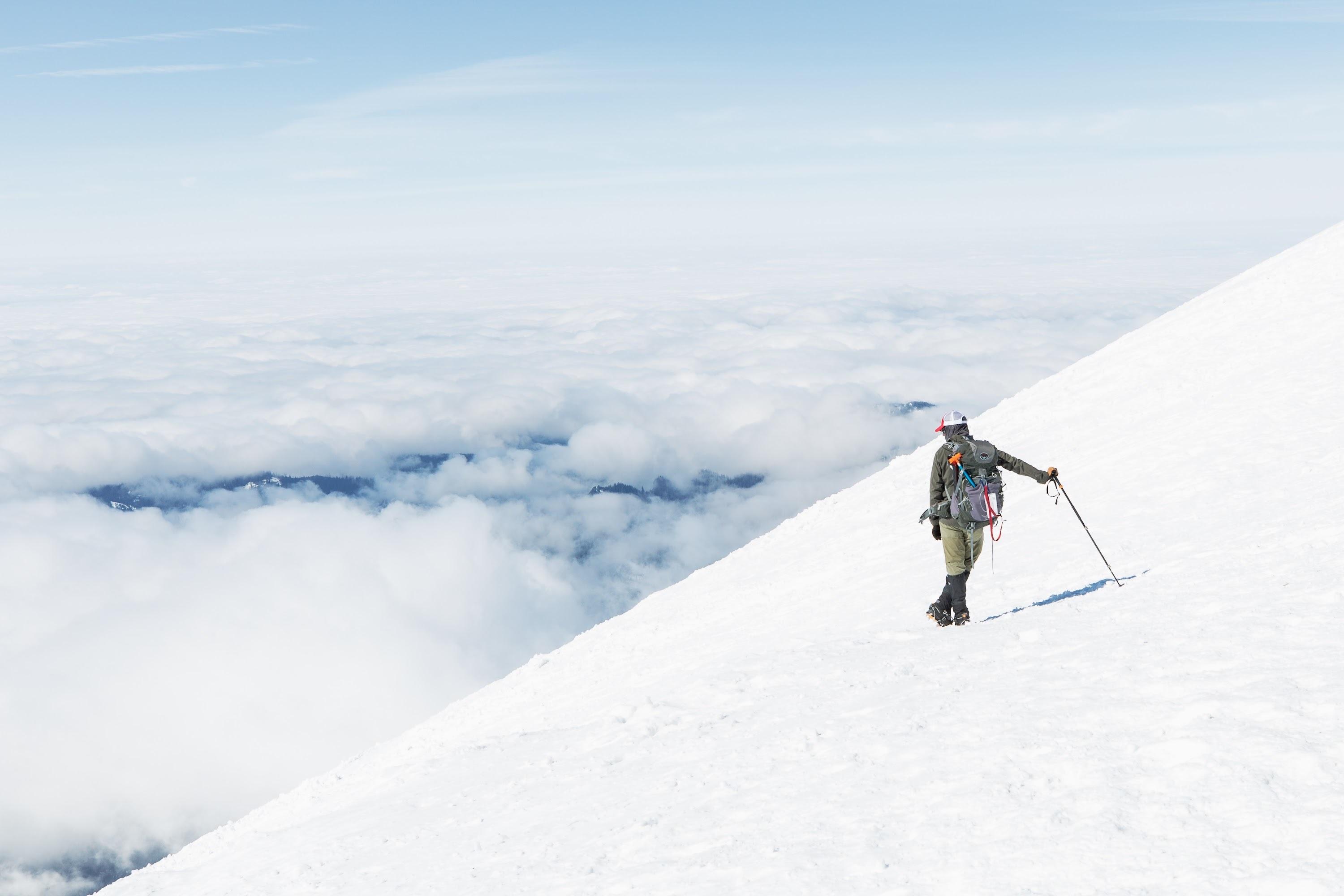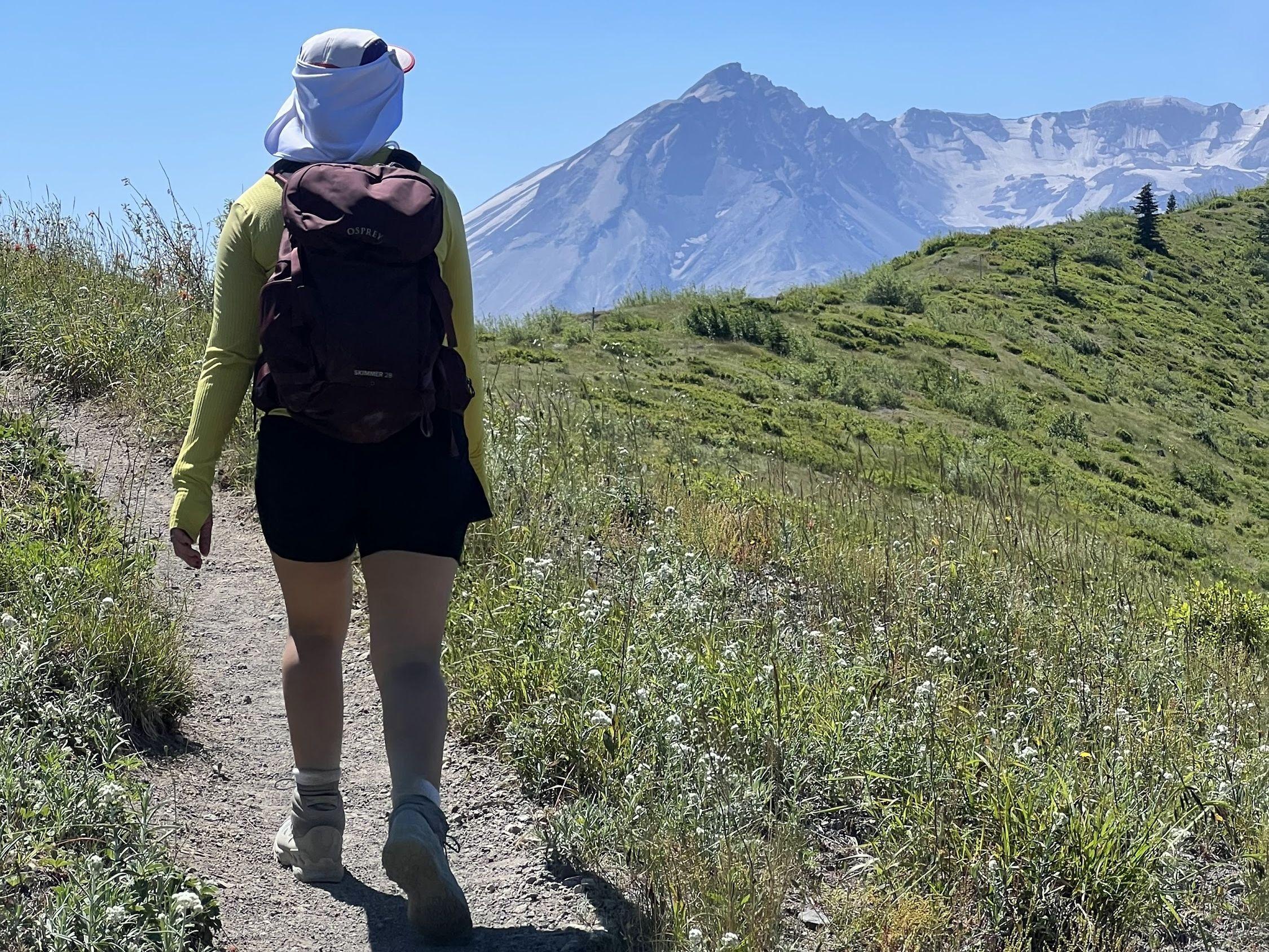We use cookies to improve your website experience. Essential cookies are required for the site to function properly, while analytics cookies help us understand how visitors use our site to make improvements. You can choose to accept all cookies or only the essential ones.
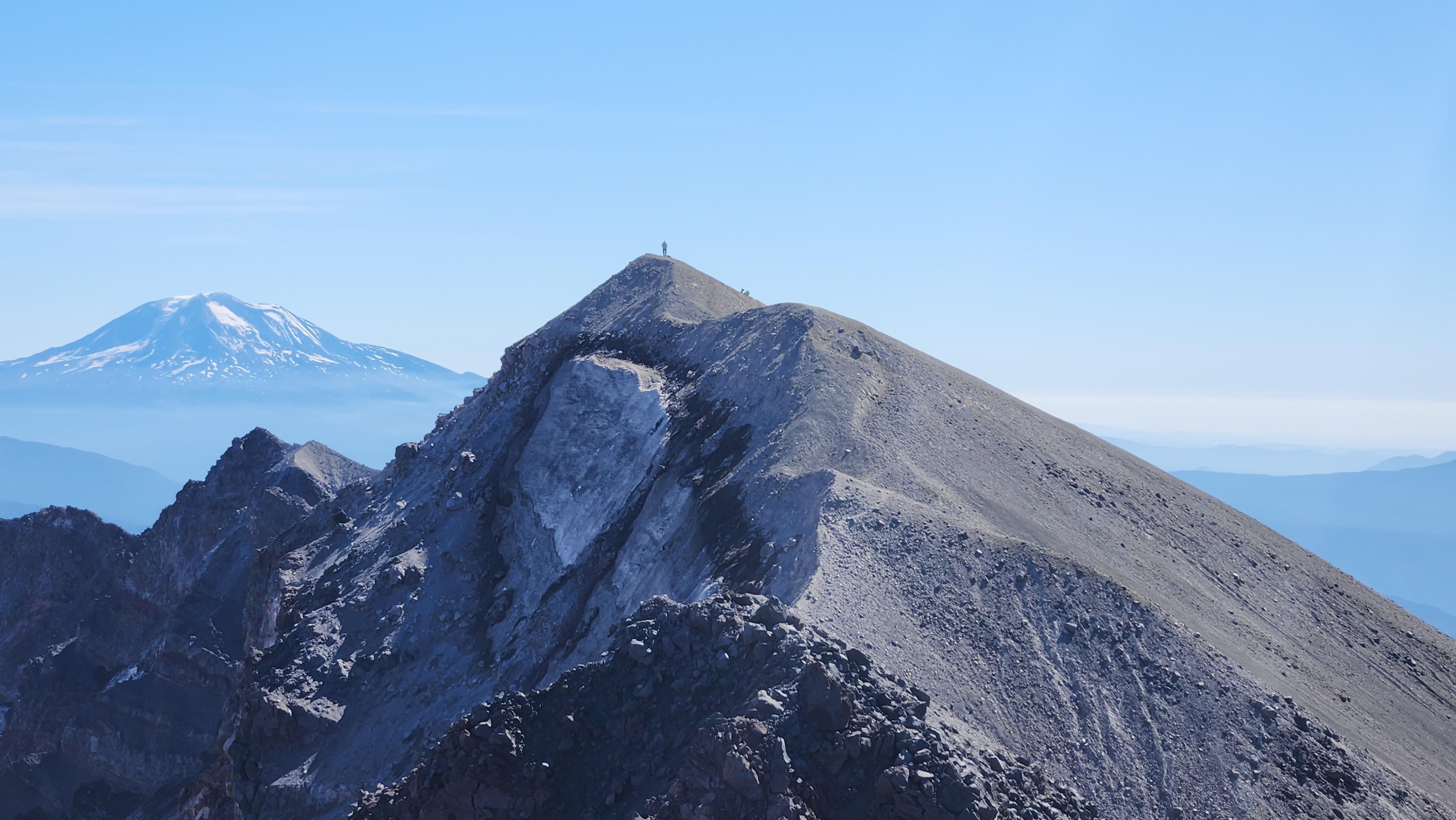
Climb Now
Mount St. Helens is an accessible yet challenging climb for experienced hikers.
Preparing for Your Climb
Mount St. Helens is a popular climb for both beginning and experienced mountaineers. Though Mount St. Helens is accessible to climbing year-round, late spring through early fall is the most popular season. Most climbers use the Monitor Ridge Route from Climbers Bivouac. This route gains 4,500 feet in five miles to the crater rim at 8,328 feet elevation. Although strenuous, this non-technical climb is suitable for experienced hikers in good physical condition who are comfortable scrambling on steep, rugged terrain. Most climbers complete the round trip in eight to twelve hours. While climbing to the crater rim is permitted, entry into the crater is strictly prohibited.
KNOW BEFORE YOU GO
Climbing an active volcano has associated risks. These include, but are not limited to; volcanic activity, weather hazards, avalanches, terrain traps, equipment failure, and human error. Before heading into the backcountry for any reason or any length of time, make sure to take the precautions necessary to ensure a safe return.
- Obtain a climbing permit for your entire group. Make sure each member has a copy, printed or digital.
- Train appropriately. This will look different for each person, but do several hikes in the weeks ahead to prepare you for the 10-12 mi, 4,500-5,500 ft climb.
- Leave your itinerary, driving route, and estimated return time with someone you trust. Make sure they know what to do in case of an emergency.
- Carry the Ten Essentials
- Navigation
- Headlamp, extra batteries
- Sun Protection
- First Aid
- Repair Kit and Tools
- Fire Kit
- Shelter
- Extra Food
- Extra Water (3-4 L per person)
- Layers
- Check the conditions. Never attempt to climb a mountain in hazardous conditions, i.e. thunderclouds, lightening storms, avalanche danger, etc. Remember that conditions can change on the mountain rapidly and sometimes unpredictably.
- Pack equipment that matches the conditions. This may include avalanche beacon, probe, shovel, ice axe, snowshoes, and/or crampons. For a detailed sample equipment list, visit MSHI's summit packing list page. Know how to utilize and safely carry this equipment before you head into the backcountry.
- Sign in to the register at the trailhead before you start your climb.
- Be prepared in case of an emergency. There is limited to no cell phone service on the roads leading to the climbing route or on the climbing route itself. Do not rely on your phone, and carry an alternative for emergency communication. Have enough supplies to last at least one night on the mountain.
- Notify your emergency person once you are off the mountain.


Other Ways to Visit
Mount St. Helens is a dynamic place and there is always something new to see! If climbing to the summit in't your thing, there are plenty of other activities including visitor centers, lava tubes, scenic drives, swimming, paddling, hiking, mountain biking, birding, fascinating geology and more!
Permit and Climbing FAQs
If you are unable to obtain permits, the Mount St. Helens Institute offers a limited number of guided climbs to the summit of Mount St. Helens each year. You can learn more and sign up by visiting this page.
CLIMBING PERMITS
If you are unable to obtain permits, the Mount St. Helens Institute offers a limited number of guided climbs to the summit of Mount St. Helens each year. You can learn more and sign up by visiting this page.
Who needs a climbing permit and when?
Permits are for any person, of any age, intending to climb the volcano within Closure Area #2 as designated in this map (PDF) with their boots on the ground, all year long. Small children to be carried by their parents or guardians for the entirety of the climb do not need to purchase climbing permits. Climbers are also required to self-register at either Climbers Bivouac or Marble Mountain Sno-Park’s climber registers for Search and Rescue purposes.
April 1 - May 14: 300 climbers/day - $15/person with $6 transaction fee, purchased in advance online at Recreation.gov
May 15 - November 30: 110 climbers/day - $15/person with $6 transaction fee, purchased in advance online at Recreation.gov
December 1 - March 31: Unlimited. Free with self-registration at the trailhead.
Is a parking permit included with my climbing permit?
No. Recreation Passes (aka parking permits) are not provided with climbing permits. You will need to purchase a Recreation Pass for each vehicle parked at the trail-head.
Marble Mountain Sno-Park Trail-Head
A Washington State Sno-Park Permit ($22/day, $40/seasonal) is required for each vehicle parked at the Marble Mountain Sno-Park. December 1 - March 31, a Washington State Sno-Park Permit is required Sno-Park permits may be purchased online or at various retailers. Oregon Sno-Park Permits are not accepted at Washington Sno-Parks.
Climber's Bivouac Trail-Head
Recreation Passes accepted at the Climber's Bivouac are: a National Forest Recreation Day Pass ($5/day cash or check at the trailhead), an Annual Northwest Forest Pass (National Forests in WA and OR only) ($30/year), or other inter-agency passes, such as America the Beautiful ($80/year). Day passes are also available for purchase on-line .
Why do I need a climbing permit?
To protect natural and cultural resources and special biological communities within the closure area, as well as public safety. Permits help the Forest Service manage climbing opportunities for the benefit of the public.
What is the Mount St. Helens Institute's role in Mount St. Helens Climbing Permits?
Mount St. Helens Institute provides online climbing information, education, and resources for climbers and other outdoor enthusiasts. In addition, we train and support volunteers on the climbing route and at lower elevation trails within the Monument. Learn more or become a volunteer HERE.
QUOTA SEASON QUESTIONS | April 1 - November 30
How and when do I purchase a permit?
You can purchase a permit on recreation.gov Permits are released in one-month increments on the first day of the preceding month. For example, April permits are released on March 1. All releases occur at 7:00 AM Pacific Time.
What is the cost of a climbing permit during quota season?
$15 per person, with a one-time reservation fee of $6 per transaction.
What does the $15 from my climbing permit help support?
The U.S. Forest Service receives the permit fee of $15, which supports trail and site maintenance, Climbing Ranger staffing, and climber safety. Recreation.gov receives the $6 reservation fee.
Can I buy permits for everyone in my climbing group?
Yes. Each Group may be between 1-12 people. As one of the changes in 2019, only one (1) permit will be issued per Group. Permit Holder (the purchaser) must know the names of each person in their climbing group at the time of purchase. The Permit Holder must be included in the climbing group.
Once I purchase my permit, what do I do next?
The Permit Holder will receive a confirmation email with instructions on how to access your permit. The permit can only be printed within 14 days before the date of the climb, which is accessed through the Permit Holder's Recreation.gov account. Take note, the permit can only be printed or downloaded ONCE, after which no changes or refunds can be made. There is only one permit per Group, though photocopies, screenshots, or photos should be shared with each Group Member, as groups often split up once on-route.
Can I change Group member names after the permit is purchased?
Yes, you may change the names of the Group Members up to 7 calendar days before your climb if the permit has not yet been printed or downloaded. However, the Permit Holder name cannot be changed at any time. The permit can only be printed or downloaded ONCE, after which no changes or refunds can be made. If the Permit Holder anticipates Group Members changing, they should wait to print their permit until their group is finalized.
Are permits transferred on Purmit.com valid?
The only valid way to transfer names on a Mount St. Helens climbing permit is through recreation.gov. Names on the permit MUST match the legal names on the IDs of the climbers. An acknowledgement letter of the transfer alone is no longer valid if the names on the permit do not match the names of the climbers.
Can I cancel my permit for a refund?
Yes, if you cancel up to 7 days before the date of your climb. You will be refunded of $15/person, the $6 reservation fee cannot be refunded. If you cancel your permit or individual Group Members included on the permit less than 7 days before the date of your climb, you will not receive a refund. It is encouraged to cancel any permits or individual Group Members included on your permit you know will go unused, so they can go back into the system for re-sale for others to enjoy.
Can I change my group size once I've purchased the permit?
Yes, you can change your group size up to 2 days before the date of your climb. A refund will only be provided if cancellations are made before 7 days before the date of your climb.
The permits are all sold out for the day I want to climb. What are my options?
Keep checking! Permits may be available for re-sale within 24 hours after they have been returned.
Who do I contact if I am having problems with my transaction or recovering my permit?
For all permit transaction, email confirmation, or other permit-related questions, contact Recreation.gov using the Help Center search tools or Contact Us links on their website.
Recreation.gov Reservation Line: (877) 444-6777. Available 10 am - midnight EST
TRAILHEADS AND CLIMBING ROUTES
Where is each trailhead?
Climbers may ascend to the rim from a variety of trailheads, but for nearly all climbers there are two primary access points and ascent routes. Each offers parking, pit toilets and limited primitive campsites but no running water nor trash service. For a more detailed description of each route, visit our Route Descriptions page.
Climbers Bivouac Trailhead (Monitor Ridge/Summer climbing route) : Generally available late June through October depending on snow conditions. Accessed off Forest Road 81. Trail is called Ptarmigan Trail #216A and merges into Monitor Ridge Trail #216H. Climb is 10 miles round-trip and has 4500’ elevation gain. You need a Northwest Forest Pass or Inter-Agency Annual Pass. There is a composting toilet at approx 2.25 miles at the tree line, where it intersects with the Loowit Trail.
Marble Mountain Sno-Park (Worm Flows/Winter climbing route) access: Generally November through late June when snow forces the closure of the road to Climbers Bivouac. Marble Mountain Sno-Park, off the 83 Road, is available year-round (unless snowfall is unusually high). The access trail is #244. The climb is 12 miles round-trip and has 5500’ of elevation gain. You need a Washington State Sno-Park permit from December 1st to March 31st.
Where can I stay the night before the climb?
Limited primitive camping sites are available at both Climbers Bivouac and Marble Mountain Sno-Park. You must display a National Forest Recreation Day Pass ($5/day), Annual Northwest Forest Pass, or an Inter-agency Annual Pass on each vehicle parked at Climbers Bivouac. Vault toilets are available at each site; there is no water or other amenities available. Campers are expected to obey all USFS policies and restrictions regarding open fires and stoves. If do not wish to camp, we recommend staying near or around Cougar, WA or Woodland, WA.
When do I need a Sno-Park pass to park at Marble Mountain Sno-Park?
Sno-Park passes are required between December 1 and March 31, or as posted.
Can I fly a drone?
Referring to this THIS MAP, anywhere within Closure Areas 1 or 2 of the Mount St. Helens National Volcanic Monument is a No Drone Zone without a special permit. This includes both the Monitor Ridge (summer) and Worm Flows (winter) climbing routes above 4,500'. For more information, please visit this Forest Service website.
PREPARING FOR YOUR CLIMB
How long does it take to climb the mountain?
It depends on a multitude of factors. The average time of a summer climb (with no snow, leaving from Climber's Bivouac) is about 4.5 hours up and 3.5 hours down for a round trip total climbing time of 8 hours. The average time of a winter climb (with snow, leaving from Marble Mountain) is about 6 hours up and 4 hours down for a round trip total climbing time of 10 hours.
If there are avalanche warnings, is the mountain closed to climbers?
No. The mountain is ONLY closed to climbers (and everyone else) if the mountain is experiencing extreme volcanic activity. It is never closed due to avalanche danger/warnings. All climbers who choose to ascend when snow is on the ground are advised to have proper avalanche training and tools before they venture on slopes of Mount St. Helens. Avalanches can and do occur in the winter, spring, and early summer months.
Is the climb suitable for young children?
It depends. The climb is much more difficult in winter conditions and turns into an extreme hike in the late summer. The climb is not suitable for anyone who has bad balance or is incapable of taking care of themselves. Age is less of a factor. It depends on the child’s maturity, coordination, and stamina. For all first-time or new climbers, we recommend prior successful experience on trails that approximate the 9-11 miles round trip and 4400’ - 5500’ elevation gains of the summer and winter routes, respectively.
Can I bring my dog on the climb?
Yes, though it is not recommended. All pets must be on a six foot long leash. Beware that volcanic rock and ash as well as snow and ice areextremely abrasive on a pet's paws. We do not recommend bring your pet along for this reason. Please respect your animal. If you do bring your dog in snow conditions, consider having them trained to accept booties; ice is very abrasive to the pads of dogs’ feet.
When do I need an ice axe and crampons?
Climbers should carry an ice axe and crampons when the possibility of winter conditions or steep snow travel exists. Note: ice axes and crampons are sharp pieces of equipment and can lead to injury if used improperly. If you don’t know how to use these properly, consider climbing later in the season (once the snow has melted), taking a training class from a mountain guiding organization, or joining us on a guided climb!
Where can I rent crampons and an ice axe?
You can rent crampons and ice axes at many climbing stores. In the Portland area, we recommend The Mountain Shop, Next Adventure, Oregon Mountain Community, and REI. Again, we recommend that you already know how to use these tools proficiently before you ascend the mountain.
Other preparation questions? See our page on how to prepare for your climb.

